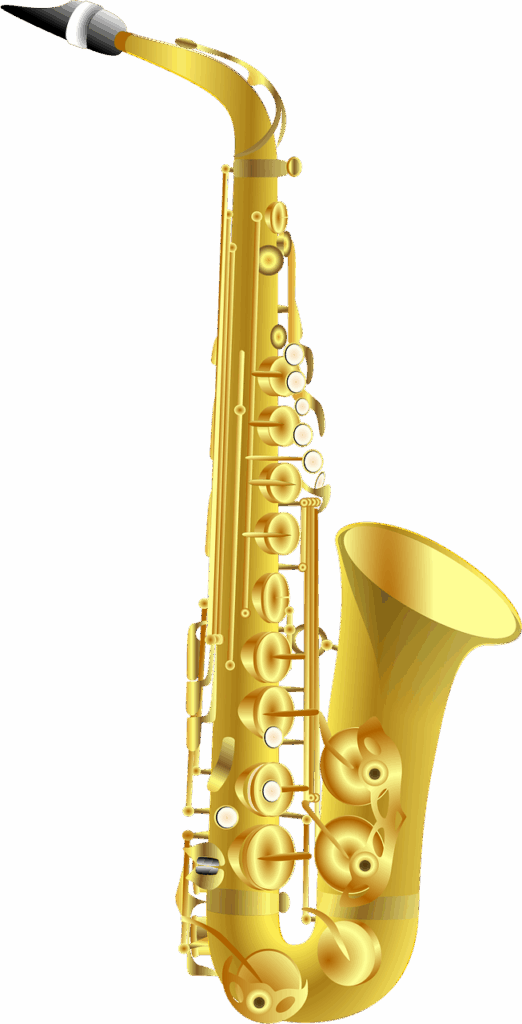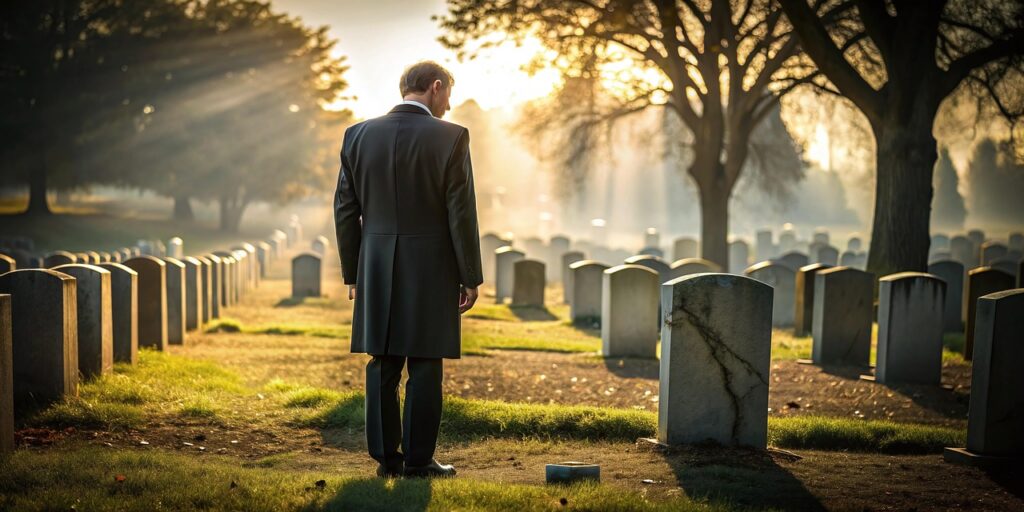
Louis Andrew Donaldson Jr., a towering figure in American jazz, whose alto saxophone lent a soulful, blues-steeped voice to the evolving landscape of the genre for three-quarters of a century, died on November 9, 2024, at the age of 98. His passing, announced by his family, marked the end of an exceptionally long and influential career that spanned from the nascent days of bebop to the defining era of soul jazz and beyond. Mr. Donaldson’s impact reverberated through countless recordings, both as a prolific leader and a sought-after sideman.
Known affectionately as Sweet Poppa Lou, Donaldson possessed an impeccable technique, a plangent tone, and an innate refinement that nonetheless embraced the raw gospel of Black church music and the gutbucket sound of rhythm and blues. This unique synthesis allowed him to transcend stylistic boundaries, influencing generations of musicians and captivating diverse audiences. His journey, marked by both artistic innovation and an unwavering commitment to musical authenticity, offers a rich tapestry of jazz history.
As we reflect on his remarkable life, it becomes clear that Lou Donaldson was more than just a musician; he was a chronicler of a pivotal era, an acute talent scout, and an unapologetic purist who understood the power of a groove to connect with people. His contributions to hard bop, his pioneering work with organ-sax combos, and his surprising resonance within hip-hop culture all speak to a versatility and a deep-seated musical intuition that few could match. This article delves into the early chapters of his illustrious career, tracing the influences and defining moments that forged a jazz icon.

1. **Early Life and Formative Musical Journey**
Born on November 1, 1926, in Badin, North Carolina, Lou Donaldson’s musical inclinations were nurtured from a young age within a deeply rooted cultural environment. His father served as an A.M.E. Zion minister, while his mother, Lucy (Wallace) Donaldson, a first-grade teacher and amateur musician, provided a crucial foundation in both Black history and the essentials of Black music. It was his mother who became the family’s primary breadwinner after his father suffered a debilitating stroke, demonstrating a resilience that perhaps echoed in Lou’s own steadfast career.
Despite struggling with severe asthma, young Lou began taking clarinet lessons from his mother. Intriguingly, the diaphragm breathing required for the instrument appeared to alleviate his respiratory issues rather than exacerbate them, a serendipitous development that paved his way into music. His mother, recognizing his talent, had purchased the instrument after observing him memorize and sing back the lessons he overheard her students playing, a testament to his innate musicality.
In 1942, at the tender age of 15, Donaldson enrolled at North Carolina A&T College in Greensboro, majoring in pre-law. There, he immediately immersed himself in the school’s estimable band, honing his skills. A powerfully built bantamweight, he also played semipro baseball, an aspiration that abruptly ended when he nearly broke a finger, a realization that such an injury could permanently hinder his ability to play his beloved instrument.
Read more about: Shaq’s Colossal Impact: How the Unstoppable Force Made NBA History (and Beyond) Look Small

2. **Military Service and the Revelation of Bebop**
Donaldson’s journey took an unexpected turn in 1945 when, despite his asthma, he was drafted into the U.S. Navy during World War II. His basic training at Camp Robert Smalls in Waukegan, Illinois, proved to be a pivotal experience, not for military reasons, but for its proximity to Chicago. Located just 40 miles away, Chicago’s vibrant club scene became his sanctuary, offering him an introduction to the electrifying world of bop music.
It was during one of his club crawls in Chicago that Donaldson had a transformative encounter with Charlie Parker, the alto saxophone master who would become his greatest inspiration. He recounted discovering Parker “laying back in the corner asleep,” initially mistaking him for a “bum or something.” However, when awakened and handed a horn, Parker unleashed a sound that forever altered Donaldson’s musical trajectory.
“Man, such saxophone I never heard in my life,” Donaldson recalled. “I said, ‘I’m giving up the clarinet! From now on I’m going to play saxophone just like this guy, if I can,’ because his tone was so sharp it just cut right through your heart.” This profound realization solidified his commitment to the saxophone and to the burgeoning bebop idiom, marking a definitive shift in his musical path. After his medical discharge from the Army in February 1946, he returned to North Carolina A&T, completing his degree in 1947.
3. **Arriving in New York and Early Blue Note Engagements**
By 1949, encouraged by touring jazzmen like saxophonist Illinois Jacquet and drummer Jo Jones, who had heard his prodigious talent during their stops in North Carolina, Lou Donaldson made the decisive move to New York City. He quickly established himself in Harlem’s abundant jazz venues, gigging regularly and participating in after-hours jam sessions at legendary spots such as Minton’s Playhouse, a cradle of bebop innovation. It was here that he began to cultivate the reputation that would soon catch the attention of jazz’s most influential figures.
One evening at Minton’s, Donaldson was approached by Alfred Lion, co-founder of Blue Note Records, a label that would become synonymous with jazz excellence. Lion asked him, “You think you might want to record for Blue Note Records? We’re looking for somebody that plays like Charlie Parker.” Donaldson, confident in his abilities, replied simply, “Well, That’s the way I play.” This fateful exchange led to a long and fruitful association with the storied label, anchoring his place in jazz history.
His first session for Blue Note in April 1952 was a stellar affair, led by vibraphonist Milt Jackson and featuring a rhythm section composed of pianist John Lewis, drummer Kenny Clarke, and bassist Percy Heath—all musicians on the cusp of forming the Modern Jazz Quartet. He then recorded with a similar lineup, with Thelonious Monk replacing Lewis, as the Thelonious Monk Quintet. Donaldson would soon cut his inaugural session as a leader that June, as part of Blue Note’s “New Faces — New Sounds” series, showcasing his distinct voice to a wider audience.
Read more about: Work Until You Drop? A Deep Dive into the Foundational Pressures Shaping America’s Evolving Work and Retirement Landscape

4. **The “Hard Bop” Evolution and Seminal Collaborations**
Lou Donaldson rapidly emerged as a leading proponent of hard bop, an idiom that skillfully blended bebop’s assertive rhythmic pulse with a strutting, blues-flavored harmonic approach. His early recordings laid significant groundwork for this style, which became a definitive statement of an earthier, more populist jazz sound. Critics like Bob Blumenthal noted that “Donaldson was second to no alto when it came to a straight balance of bebop and soul,” capturing his essential contribution to the genre’s evolution.
In 1953, Donaldson’s collaborations continued to flourish as he recorded sessions with the trumpet prodigy Clifford Brown and the renowned drummer Philly Joe Jones. The following year, on February 21, 1954, he participated in one of jazz history’s most celebrated live recordings, captured for Blue Note at Birdland in Midtown Manhattan. This session featured an all-star lineup including Brown, pianist Horace Silver, bassist Curly Russell, and drummer Art Blakey, collectively known as the Blue Note All Stars.
This seminal recording, initially released as a 10-inch disc and later as the best-selling 12-inch LP “A Night at Birdland,” is widely regarded as a definitive statement of the hard-bop style. It not only launched the decades-long performing career of Blakey’s Jazz Messengers but also cemented Donaldson’s reputation as a key innovator. His ability to fuse technical prowess with an emotionally resonant, blues-driven sound made him indispensable to the developing hard bop movement.
5. **The Enduring Legacy of “Blues Walk”**
Among Lou Donaldson’s extensive discography, the 1958 album “Blues Walk” stands out as a true masterwork, solidifying his reputation and showcasing the blues as the undeniable heart of his musical philosophy. The album, a thoughtful blend of jazz standards and original compositions, became his self-proclaimed favorite. Its title track, “Blues Walk,” quickly ascended to the status of a jazz standard, a testament to its infectious melody and enduring appeal.
This particular recording exemplified Donaldson’s profound understanding of the blues, infusing his impeccable technique with an raw, elemental spirit. It was music deeply rooted in the Black church tradition and the gutbucket sound of rhythm and blues, elements that he prized dearly in his improvisations. The album’s success further established him as a musician who consistently aimed to connect with his audience, creating music that resonated deeply and authentically.
“Blues Walk” was more than just a commercial success; it was a cultural touchstone that helped to define the soulful, accessible sound that would become a hallmark of Donaldson’s career. It demonstrated his ability to craft music that was both sophisticated and universally appealing, bridging the gap between intricate jazz improvisation and the visceral power of the blues. The album remains a cornerstone of his legacy, continually celebrated for its warmth, groove, and enduring musicality.
6. **The “A Night at Birdland”
Lou Donaldson’s participation in the legendary “A Night at Birdland” live recording sessions in 1954 remains one of the most significant moments in jazz history. Captured at the iconic Midtown Manhattan club, these sessions, featuring an all-star cast of Clifford Brown, Horace Silver, Curly Russell, and Art Blakey, are revered as among the greatest live jazz recordings ever made. However, the subsequent crediting of these albums led to a long-standing point of contention for Donaldson.
Initially released as a 10-inch disc and later as a best-selling 12-inch LP, the recordings were eventually credited to the Art Blakey Quintet. This attribution, which has been perpetuated in jazz history, was a source of frustration for Donaldson, who maintained that the group was initially introduced as “the Blue Note All Stars” at the beginning of their engagement. He offered a memorable, and somewhat critical, explanation for the shift in credit.
In his unpublished autobiography, “A Wonderful Life,” Donaldson recounted, “But in the middle of the week, Art put two or three dollars in Pee Wee’s pocket, because Pee Wee was a hustler, he always wanted you to give him some money and he’d advertise your name. Suddenly ‘We’ became ‘Art Blakey and his …’” This anecdote, while shedding light on the mechanics of club promotion at the time, underscores Donaldson’s belief that the seminal recordings should have reflected a more communal effort rather than singularly crediting Blakey, despite its impact on Blakey’s career.
Regardless of the historical crediting dispute, Donaldson’s contribution to these sessions was undeniably crucial. His alto saxophone work on “A Night at Birdland” is a masterclass in hard bop, demonstrating his agile technique and soulful phrasing alongside some of the era’s most formidable talents. It stands as a powerful testament to his musicianship during a pivotal moment in jazz’s evolution, regardless of whose name appeared most prominently on the record sleeve.

7. **Pioneering Soul-Jazz with Organ Combos**
As the landscape of jazz continued its dynamic evolution, Lou Donaldson demonstrated an astute ability to adapt and innovate, steering his sound towards a more accessible, groove-oriented direction that would become known as soul-jazz. A pivotal moment in this transition was his extensive collaboration with the organist Jimmy Smith, beginning in 1957. This pairing proved remarkably fertile, fundamentally influencing Donaldson’s approach to rhythm and harmonic texture, and laying the groundwork for a new, highly popular jazz genre: the organ-sax combo.
Donaldson’s groups soon began to mirror Smith’s ensemble configuration, typically featuring saxophone, trumpet, organ, guitar, and drums. This setup allowed for a rich, blues-infused sound that drew heavily from the Black church tradition and the visceral power of rhythm and blues. His bands became veritable incubators for emerging organ talent, attracting musicians who would themselves become significant figures in the genre, including Dr. Lonnie Smith, John Patton, Billy Gardner, and Leon Spencer. Later in his career, he would continue this tradition with artists like Kyle Koehler and Akiko Tsuruga.
The soulful, accessible nature of these organ-sax combos resonated deeply with audiences, particularly in the Black nightclubs where Donaldson frequently performed. He was known for his dedication to connecting with his listeners, often hauling a Hammond B3 organ in a trailer behind his station wagon during extensive tours across “the circuit” of demanding inner-city clubs. This commitment to an earthier, more populist sound underscored his belief in music that moved people both physically and emotionally.

8. **The Crossover Success of “Alligator Boogaloo”**
Lou Donaldson’s embrace of soul-jazz culminated in undeniable crossover success, most notably with his 1967 album “Alligator Boogaloo.” This landmark recording, which featured the rising guitar virtuoso George Benson, the incomparable Hammond B3 organ player Lonnie Smith, and drummer Idris Muhammad (then known as Leo Morris), began as an informal studio jam but quickly developed into a cultural phenomenon. Its funky title track proved infectious, unexpectedly cracking the Billboard Hot 100, a rare achievement for a jazz record in the 1960s.
The album’s commercial triumph solidified Donaldson’s reputation beyond the traditional jazz sphere, demonstrating his capacity to craft music that was both sophisticated and universally appealing. His sales throughout this period were exceptional for a jazz musician, proving that artistic integrity and commercial viability were not mutually exclusive in his world. “Alligator Boogaloo” became a cornerstone of the soul-jazz movement, establishing a template for the genre with its memorable riffs and irresistible grooves.
Following this success, Donaldson continued to explore this vibrant idiom, releasing “Midnight Creeper” in 1968. This album, built on an eerily similar groove and featuring nearly identical personnel, further cemented his status as a master of the funky, soulful sound. These recordings not only defined a moment in jazz history but also shaped the mainstream lingua franca of the mid-to-late 1960s, offering a distinctly American sound that resonated across diverse communities.
9. **An Uncompromising Musical Philosophy**
Despite his commercial success and willingness to adapt, Lou Donaldson remained steadfast in an uncompromising musical philosophy, a perspective he shared with candor throughout his life. He famously championed a classicist’s mantra against the rising tide of jazz fusion, declaring, “No fusion, no confusion.” This stance extended to other emerging styles, as he often expressed disdain for smooth jazz and rap music, once quipping, “No 50 Cent, who’s not worth a quarter.”
At the heart of his artistic conviction was the blues. Donaldson unequivocally asserted, “If you don’t play the blues, you lose. If you don’t play the jazz and swing, you’re not playing jazz.” For him, authenticity resided in these fundamental elements, deeply rooted in the traditions he cherished. He was unapologetic about seeking an audience, explaining his approach: “I always had my music geared to the people. ‘Cause when I played, I listened to what they were giving me the applause for. Whenever they’d applause, that’s what I kept playing.”
This direct, audience-centric approach was not a compromise but a core tenet of his musical ethos, reflecting a profound understanding of music’s power to connect. Furthermore, Donaldson distinguished himself through a personal integrity that transcended his artistic statements. He was a rarity in jazz, a musician who neither smoked nor drank and unequivocally opposed the use of what he euphemistically termed “vitamins,” referring to illicit drugs, particularly heroin. He cultivated a reputation for hard-earned, unvarnished truth-telling in his interviews and public appearances, always speaking his mind with gleeful abandon.
Read more about: DOROTHY’s Unyielding Spirit: Charting the American Rock Band’s Journey, Evolution, and Enduring Impact on Modern Music

10. **The Unexpected Embrace by Hip-Hop**
Decades after his initial wave of commercial success, Lou Donaldson’s distinctive sound found an unexpected and powerful new life within the burgeoning world of hip-hop. His funky records, rich with infectious riffs and propulsive beats, became a favorite source for a new generation of producers and DJs. This unanticipated embrace not only introduced his music to a vast, younger audience but also solidified his legacy across musical genres.
Pioneering hip-hop figures like Pete Rock were early adopters, famously incorporating the horns from Donaldson’s 1970 track “Pot Belly” into a 1992 remix of House of Pain’s iconic “Jump Around.” This marked the beginning of a widespread appreciation for Donaldson’s grooves within the hip-hop community. His 1967 cover of Bobbie Gentry’s “Ode to Billie Joe” proved to be an even more fertile ground for sampling; the unique drum beat laid down by Idris Muhammad became one of the most sampled elements in all of hip-hop, underpinning notable tracks by artists such as A Tribe Called Quest, Lauryn Hill, Kanye West, and Eminem.
This renaissance of his catalogue brought significant benefits, not just to Donaldson’s enduring legacy, but also to his bank account. It was a testament to the timeless quality of his grooves and his innate ability to craft music that resonated across different eras and cultural contexts. The sampled excerpts, meticulously woven into new sonic tapestries, ensured that Sweet Poppa Lou’s musical spirit continued to inspire and move listeners, proving the universal appeal of his deeply soulful approach.
Read more about: From Bud Bundy to Beyond Recognition: The Shocking Transformations and Unexpected Ventures of David Faustino Today!

11. **Later Years, Accolades, and Retirement**
Lou Donaldson’s remarkable career continued to flourish into his later years, marked by consistent recording activity and well-deserved accolades. He remained a presence on the Blue Note label until 1980, contributing to its diverse catalog long after its original ownership had changed hands. Beyond the studio, he maintained an active performance schedule, becoming a popular fixture on the European festival circuit and later a cherished attraction on jazz cruises throughout the 1980s and 1990s.
His immense contributions to jazz were formally recognized with significant honors. On October 11, 2012, he was inducted into the North Carolina Music Hall of Fame, a fitting tribute to his regional roots and national impact. In the same year, the National Endowment for the Arts named him a NEA Jazz Master, the highest honor the United States bestows upon jazz musicians, acknowledging his pivotal role in shaping the genre.
In 2018, at the age of 92, Donaldson officially declared his retirement from performing, having completed his final shows the previous year. Yet, his connection to music and his audience remained strong. He made public appearances at his 95th, 96th, and 97th birthday tribute shows at Dizzy’s Club in Manhattan, demonstrating his enduring spirit. Although a bout of pneumonia prevented him from traveling for his 98th birthday celebration, his presence was deeply felt, a testament to the affection and respect he commanded.
Read more about: Shaq’s Colossal Impact: How the Unstoppable Force Made NBA History (and Beyond) Look Small

12. **A Legacy Rooted in Blues and Authenticity**
Louis Andrew Donaldson Jr., a legendary alto saxophonist whose soulful, blues-steeped voice permeated the jazz world for three-quarters of a century, passed away on November 9, 2024, at the age of 98. His death, from pneumonia, marked the quiet close of an exceptionally long and influential life that left an indelible mark on American music. The news was shared by his family, signaling the end of an era for many who cherished his sound.
Beyond his groundbreaking musical innovations, Donaldson’s life was also characterized by deep personal connections. He was married to his sweetheart, Maker Neal Turner, from September 1950 until her death in 2006, a union that spanned 56 years. Together, they raised two daughters, Lydia Tutt-Jones, who sadly passed away in 1994, and E. Carol Webster, who survives him. His family remained a steady foundation throughout his demanding career.
Lou Donaldson cultivated a unique identity in jazz, affectionately known as Sweet Poppa Lou, a moniker that captured his blend of refined technique and raw, gospel-infused expressiveness. His career was a masterclass in musical authenticity and a testament to the power of a deeply felt groove. He once encapsulated his philosophy, stating, “Jazz has to hit a certain spot. There’s a groove that you’ve got to hit, and if you play enough music around musicians and play a lot in front of the people, you’ll learn where it is.” This profound insight into the symbiotic relationship between musician and audience was the essence of his enduring appeal.
Read more about: DOROTHY’s Unyielding Spirit: Charting the American Rock Band’s Journey, Evolution, and Enduring Impact on Modern Music
From the nascent days of bebop to the defining era of soul jazz and its unexpected resonance within hip-hop, Donaldson’s alto saxophone articulated a sound that was both timeless and immediate. He was not merely a musician but a chronicler of his era, an acute talent scout, and an unapologetic purist who understood that the heart of jazz beats strongest when it connects directly with the human spirit. His legacy, steeped in the blues and an unwavering commitment to musical truth, will undoubtedly continue to inspire and resonate for generations to come, a testament to Sweet Poppa Lou’s indelible contribution to the American soundscape.






